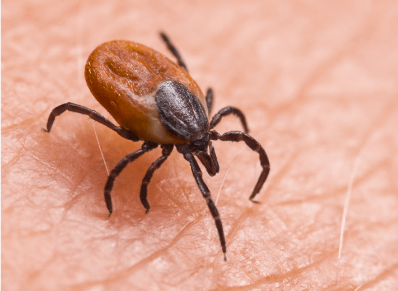What is Lyme disease?
Lyme disease is affected by the bacteria Borrelia burgdorferi, which can be contracted through the bite of an infected deer tick (also known as a black-legged tick). The infection is not transmitted by common “wood ticks” or “dog ticks.”
What are the different stages of Lyme disease?
Lyme disease can progress in stages, overlapping and creating signs involving the skin, joints, heart, or brain system. These are the stages:
- Early-stage Lyme conditions (weeks one to four).
- Lyme disease spreads early (months one through four).
- Late persistent, late disseminated, or simply late Lyme disease (four months or more later, even years afterward).
What are the signs of Lyme disease?
- Early Lyme disease signs
Early Lyme disease signs often include:
Erythema migraines (EM) are reddish rashes or skin lesions.
The rash appears as a little red area at the location of the tick bite one week to four weeks after the bite. The spot grows over days or weeks to produce a circular, triangular, or oval-shaped rash.
Because it appears as a red ring surrounding a clear center area, the rash may resemble a bull’s eye. The rash might be as small as a dime or as large as the width of a person’s back. As the infection spreads, multiple EM rashes (lesions) may emerge at various locations on your body.
- Fever.
- Headache.
- Stiffness in Neck
- Body Aches and Joint pains
- Fatigue.
- Lymph node swelling (swollen glands).
- Signs Of Second Stage Lyme Condition Signs
The following are signs of the second stage of Lyme condition (the early disseminated stage):
- Rashes in several places.
- Bell’s palsy, a facial muscle paralysis.
- A heart block is a disruption in the heart’s electrical circuit.
- Numbness or unusual sensations (neuropathy).
- Late Persistent Lyme Condition
The following are signs of late Lyme disease, which can occur months to a year after getting affected:
Recurrent occurrences of joint swelling (arthritis). It usually affects big joints, such as the knee.
Concentration problems, sometimes known as “brain fog.” It is a type of encephalopathy or brain injury.
Polyneuropathy is the damage of nerves throughout your body, including your skin, muscles, and organs.
How is Lyme Disease Detected?
A healthcare expert will detect Lyme disease based on your signs, physical signs (such as a rash), and whether or not you have been in an area populated by infected ticks.
Many people don’t recall or realize that a tick bit them. Because the tick is so tiny, its bite is typically painless.
Lyme disease can be detected with two positive (or occasionally ambiguous) findings required. Your provider will use a blood test to confirm the diagnosis. If your first blood test for Lyme disease returns negative, you won’t need another one. If the first test is positive or ambiguous, your provider will repeat it.
Medications And Care For Lyme Disease
Typically doxycycline or amoxicillin, are effective Lyme disease therapies. The stage of the disease determines the duration of your therapy. Generally, the sooner you take care of the condition, the faster and more effective your recovery.
Pregnant women should also have cared for Lyme illness. However, no evidence exists that a fetus can contract the virus from its parent. There is also no conclusive evidence that abortions are more common after Lyme disease.
What Can Be Done If Get Bitten By A Tick?
If a tick bites you, the most straightforward approach to get rid of it is to do the following:
- Tweeze the tick’s “head” at the level of your skin with blunt tweezers until it releases its grasp on your skin.
- Avoid shattering the tick’s body or handling it with your bare fingers to avoid exposing yourself to the bacteria in the tick.
- Soap and water should be used to clean the bitten area properly.
- Kerosene, Vaseline, or hot cigarette butts should not be used to remove the tick.
- Using your fingers or tweezers, squeeze the tick’s body.
Lyme Disease Signs After Therapy
Even after receiving the right therapy, some persons (5% to 15%) may endure persistent weariness or headaches. It is referred to as post-therapy Lyme disease sign (PTLDS). It does not indicate that you are still infected. Additional medications are unlikely to help PTLDS. Most persons in this category will experience signs that will subside during the next six months.
Alternative Therapy For Lyme Disease
There are many alternative therapies to take care of this condition is homeopathy, natural therapy, Biomagnetism therapy, and more.
Biomagnetic therapy is ideally suited for addressing the root cause of Lyme Disease and its correlated co-infections.
During your session, your therapist can determine pH imbalances specific to you. It is vital because those pH imbalances create environments capable of harboring pathogens. Using this approach, your therapist creates a specific, individualized protocol that targets the root cause of your signs.

